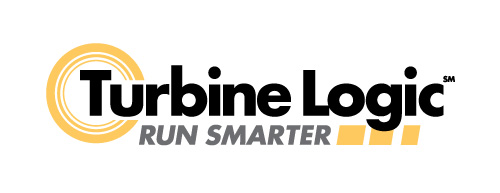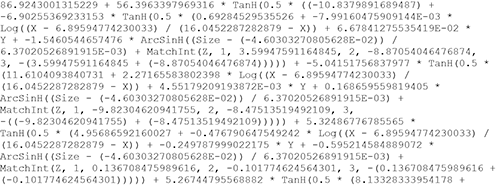The moment I hit the ground, I knew it was broken. I was rock climbing with my wife the day before embarking on a weeklong canoe trip. Half-way up the rock face, I lost my grip and fell. I landed hard on my right foot, which immediately buckled and rolled. The pain was excruciating.
Rinda wanted to take me straight to the emergency room. I should have listened to her, but I knew that would be the end of our vacation. I also figured I wouldn’t do much walking in a canoe, so I quickly learned to hobble on one foot and spent the week canoeing down the beautiful Green river.
When we arrived back home in Atlanta, Rinda took me to the ER, where I got an x-ray. The result was not surprising. A fractured ankle and heel bone. What was a surprise was that my x-ray had been reviewed – not only by a radiologist – but also by a computer. Artificial intelligence is becoming as good at reading some types of medical images as well-trained doctors.
And it’s not just doctors and hospitals. These days, it seems that everywhere I turn people are talking about machine learning and artificial intelligence. Attending conferences, there’s no shortage of confident speculation about its disruptive and transformational potential for the power industry. Talking to OEMs and vendors, you’d think they’ve got the perfect AI solution to solve all your problems.
While I firmly believe artificial intelligence has the potential to transform the power industry and the world, I’m struck by the huge gap between the marketing hype and the reality of AI as it exists today. There’s no doubt that AI is an incredibly useful tool. But like all tools, one must know both how and when to use it. Otherwise, we become like the proverbial man with a hammer who thinks every problem is a nail.
And so this month, I want to put AI in perspective, particularly for the power industry. And in so doing, I hope to answer a lot of the common questions I get from customers. What exactly is artificial intelligence? What problems in our industry is it good (and not so good) at solving? And how will it impact our industry and our jobs in the coming years?
So grab a fresh cup of coffee, and let’s dive right in.
Everything Old is New Again
“There is nothing new under the sun”
AI / Machine learning is actually old technology. Some of the mathematics behind neural networks, one of the fundamental techniques used in machine learning, date back to World War II. In fact, many of the underlying theories and mathematics for a majority of AI date back to the 1970s. So, what has changed? Three things.
The first is the increase in sensors producing large datasets that provide a window into the internal workings of a complex systems like power plants. The second is the advent of computers capable of quickly handling and performing complex operations on extremely large datasets. The computing power necessary to carry out AI calculations now exists on even the simplest of devices. Your cell phone actually has the computing power to carry out basic AI functions.
The other factor responsible for AI growth is the commoditization of the technology which has enabled engineers to apply it to an almost unlimited number of problems. AIs strong ability to recognize and predict patterns and trends is one reason for exploding growth. Almost anyone, with minimal technical background, can fit an AI model to data and use it to perform predictions, with the same ease you can fit a curve in Excel.
But What Is It?
As a practicing engineer or plant manager AI may sound like some incredibly complex computer model that’s impossible to understand. In some sense, that couldn’t be further from the truth. While the models used in AI can be quite large and complex, the underlying math is often quite easy to comprehend. Look at the AI equation below.
This is a screen shot of an actual artificial neural network. If you rub your eyes and look closely, you’ll see it is just a long string of tangents, sines, and basic arithmetic. While the process for creating this equation is somewhat complex, you can see the actual implementation is conceptually a complicated curve fit. Think about all the ways you have used old fashioned curve-fits and their limitations. A majority of AI techniques have very similar limitations, especially when it comes to extrapolating.
How to Use AI
When applied properly, AI has a multitude of powerful uses. It can greatly increase productivity, especially for repeatable engineering tasks. It can also make extremely complex physical system models faster and more portable. And it can be used to build predictive models from data where no physical model exists. In other words, it can be used when physics-based models hit their limits. Better yet, it can work in sync with physics-based models, where the two work in tandem to accomplish more than either could in isolation.
AI is also extremely useful at helping to understand complex relationships where measurements are unreliable or have a high degree of uncertainty. For instance, we have successfully applied different AI techniques to speed up calibration of gas turbine performance models, identify anomalous combustion dynamics to detect impending failures, and to generating fault signatures for monitoring and diagnostics.
So, what can go wrong? Consider the following example. Experts have taught primates sign language, sorting, shape recognition, and other simple tasks based on pattern recognition and simple repetition. Given their ability to learn, why haven’t monkeys taken over the world?
Because there is a fundamental difference between repeating a task or recognizing an object you have seen before and using intuition and problem-solving to invent a new solution. In terms of ability to learn, AI is very similar to the monkey. AI can learn to recognize existing patterns, trends, and models extremely well, but struggles when it comes to predicting new outcomes.
Ewen Callaway put it well summarizing the findings of Claudio Tennie and Michael Tomasello of the Max Planck Institute for Evolutionary Anthropology:
Chimps focus on the outcome of a demonstration – a cracked nut – rather than the bodily actions that produce the treat. Yet humans imitate the sequence of body movements: raising a stone or hammer above their shoulder before slamming it down. –
https://www.newscientist.com/article/dn17499-apes-may-imitate-but-they-struggle-to-innovate/
Essentially, the monkeys, like AI are focused on input and output. The process that links input (a whole nut) to the output (a cracked nut) is just a series of abstract equations for AI. But only true, human intelligence can decompose the problem and focus on the WHY.
This is the basic limitation of commoditized AI today (it’s also the reason computers will not take over the world in terminator-like fashion). Of course, AI researchers are hard at work developing new approaches that are more like human intelligence, but I have yet to see any commoditized AI packages that even come close.
The Bottom Line
In the coming years, we’re going to see the proliferation of AI everywhere, including the power industry. It will transform our industry in ways both predictable and unimaginable. I suspect that many of the jobs we do today – and the ways we do them – will be affected.
I’m optimistic that will by and large be to our benefit. AI, as we’ve learned, is not some new kind of magic. And like every other technology, it should ultimately help us unlock more productivity, capability, and value in our work and in our lives.
If you take nothing else away from these musings, I hope it’s this: learn to use AI appropriately as part of your larger toolkit. Don’t, however, use it blindly hoping it will solve all your problems. That’s no better than guessing. Even worse, it’s like canoeing down the Green River with a fractured ankle. You might complete the journey, but you won’t enjoy the ride.
More Info
AI powers many key functions of Turbine Logic’s products and services. Our approach to unlock its power is to use it in conjunction with underlying knowledge about the system at hand – this could be either experience learned over many years or underlying physical models. The secret sauce is how to best integrate these two and is the basis of our proprietary and industry leading product offerings. In our view, the best use of AI/Machine Learning requires both deep domain expertise and enough data.
Yours truly,



